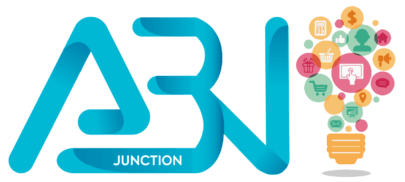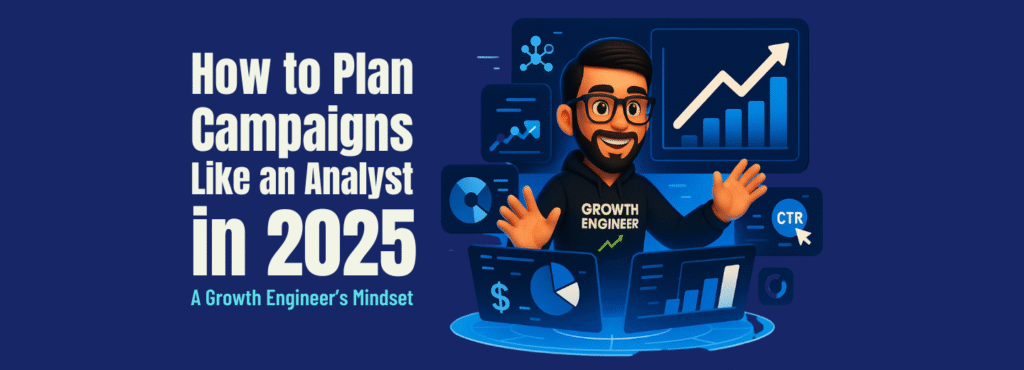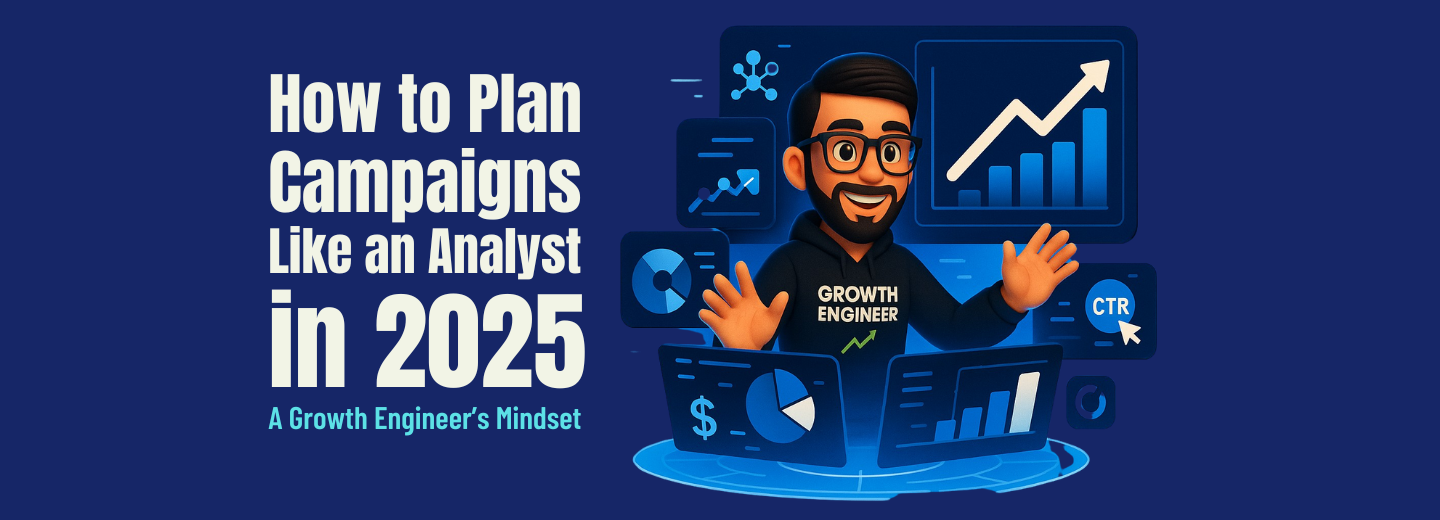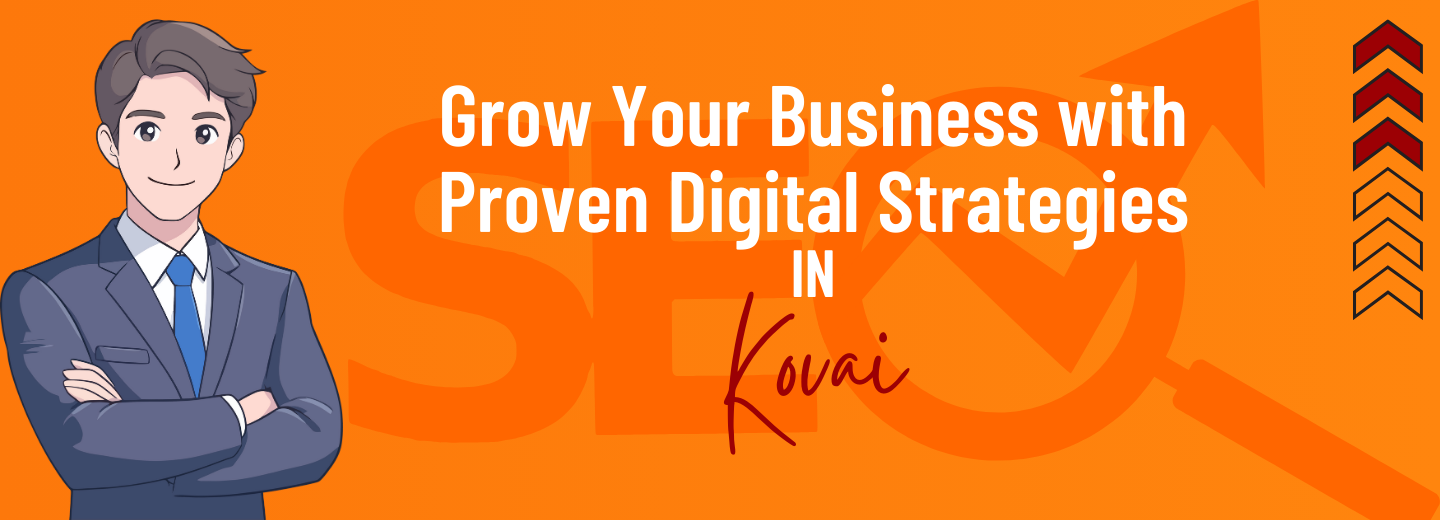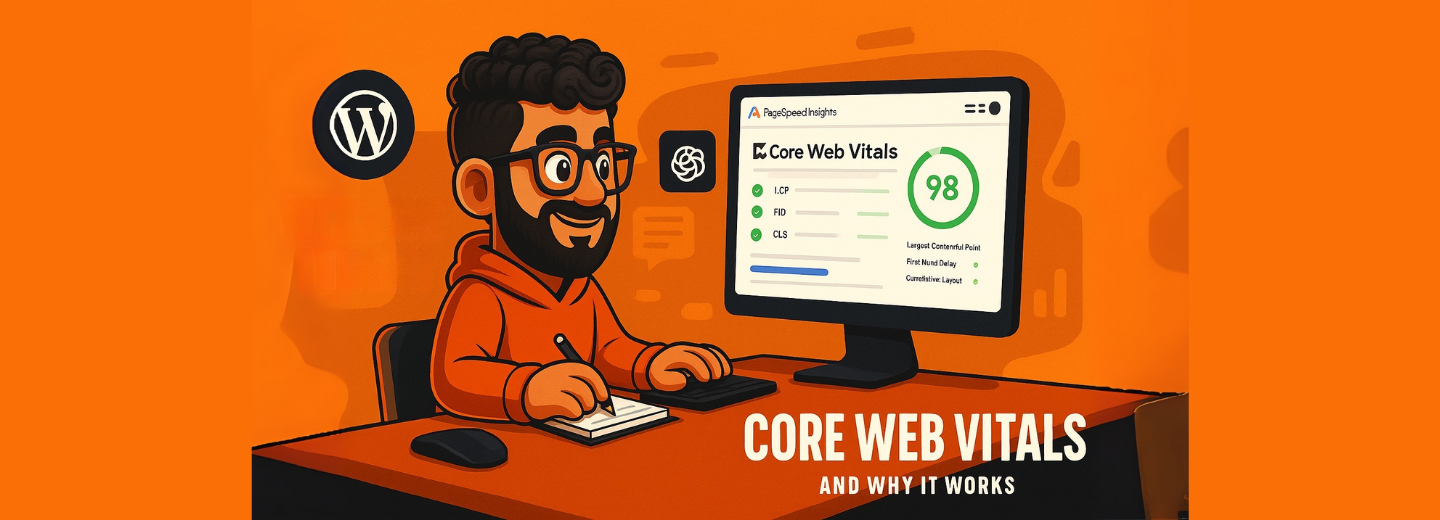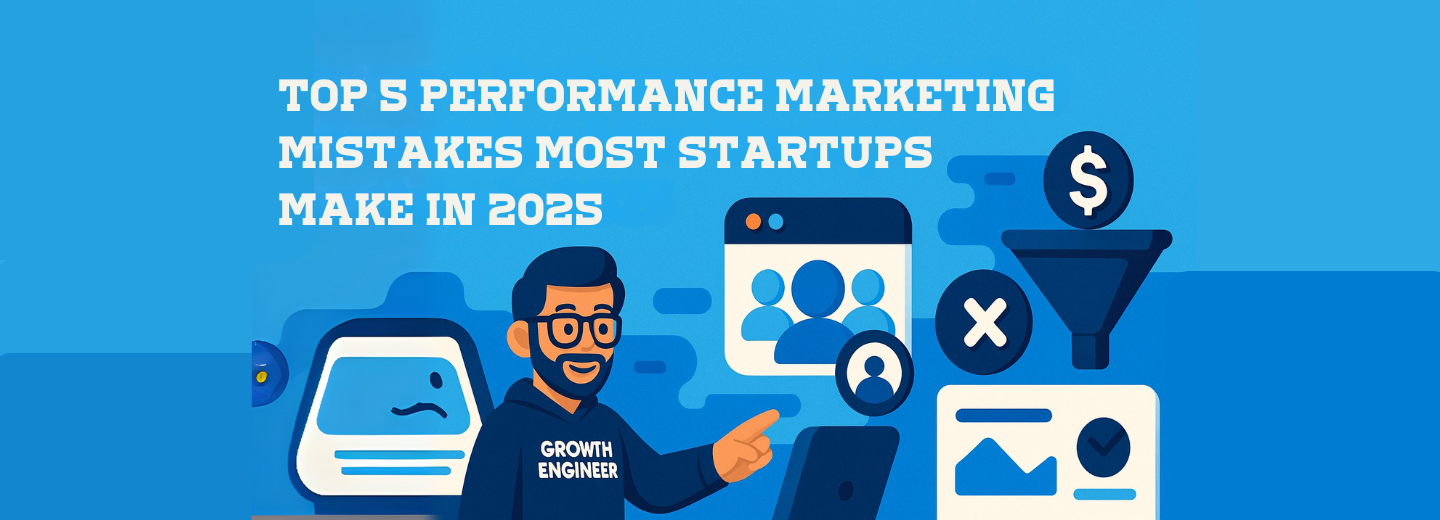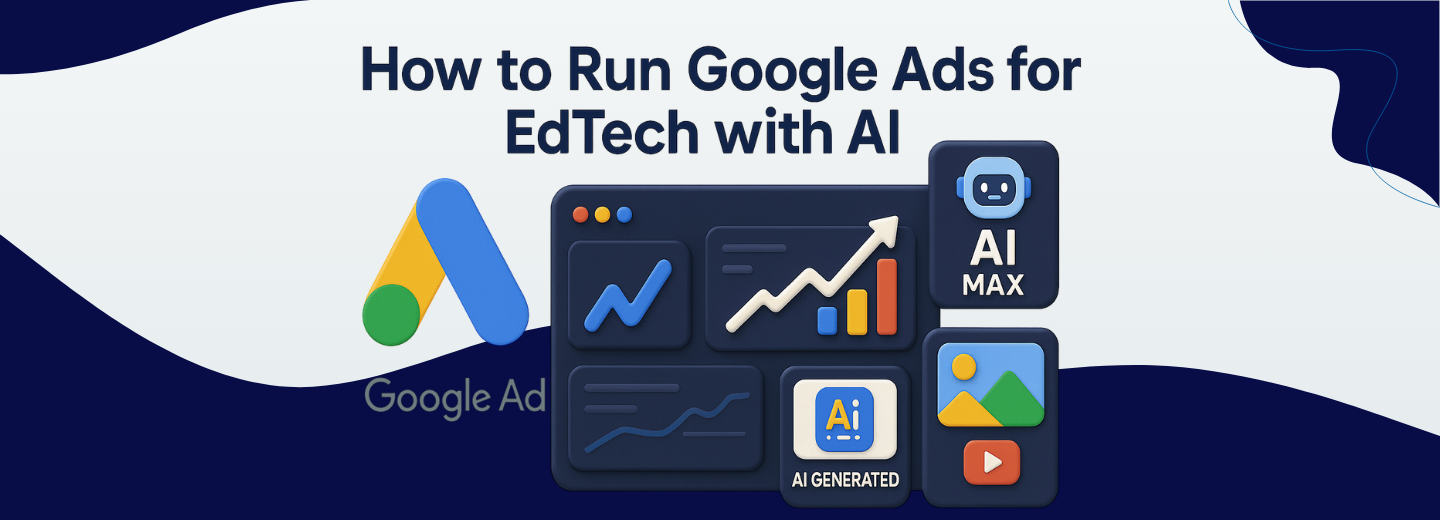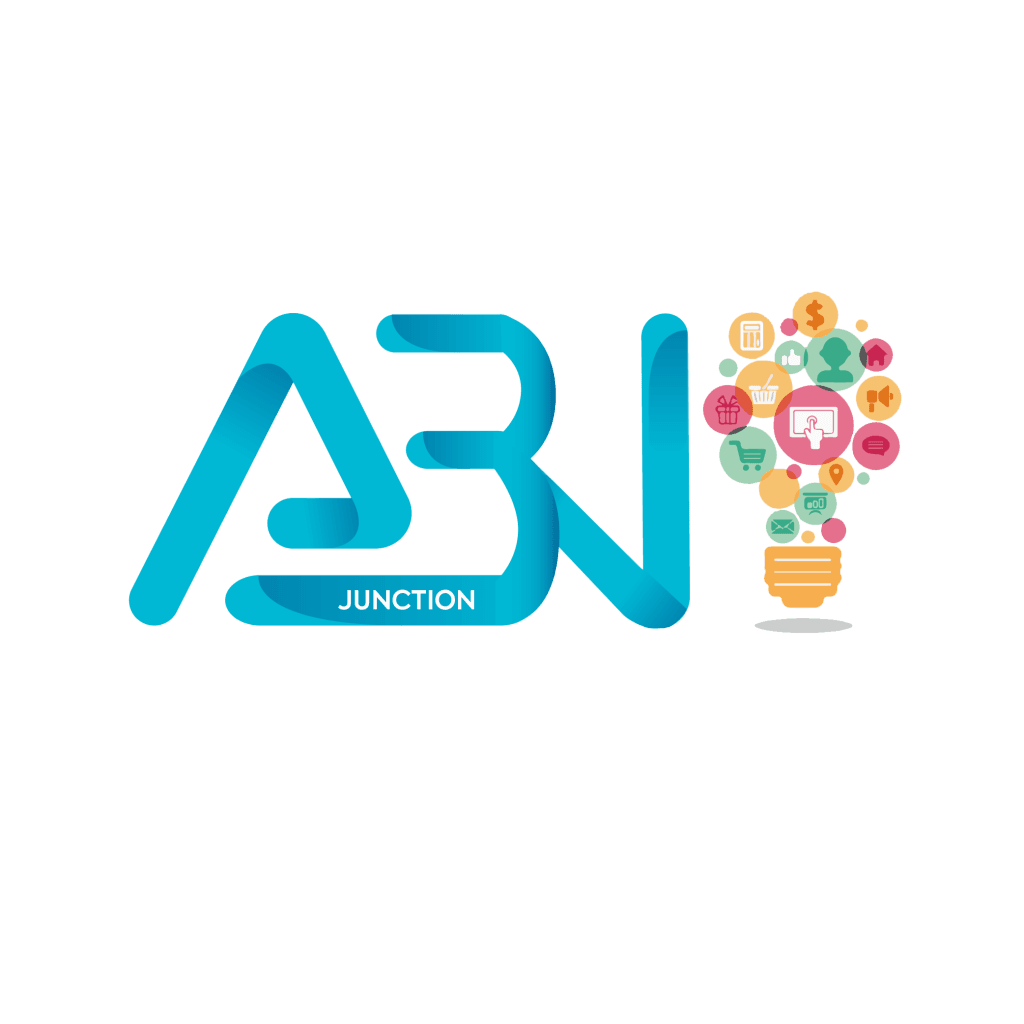“Great marketing isn’t just creative—it’s calculated.”
That’s the core belief behind the Growth Engineer mindset. In 2025, marketing has become more performance-driven than ever. Creative storytelling still matters—but without data-backed decisions, even the best ideas fall flat.
In this blog, let’s dive deep into how to plan campaigns by thinking like an analyst, use AI to your advantage, and plan strategies that perform—not just post and pray.
🔍 What is a Growth Engineer Mindset?
Think of a Growth Engineer as the perfect blend of strategist + data scientist + performance marketer. Instead of asking, “What should we post today?” they ask:
- What’s the business goal this campaign supports?
- What does the data tell us about our audience?
- What levers can we pull to maximize returns?
It’s not about doing more. It’s about doing what works—and doing it smarter.
📊 Step 1: Study the Right Data First (Don’t Jump into Ads)
Before building any campaign, ask yourself: What do we know—and what do we need to know?
✅ Here’s what a real growth engineer checks:
- Google Analytics / GA4: Where do users drop off? Which sources convert?
- Google Search Console: What queries bring visibility? Are we ranking locally?
- SimilarWeb & SpyFu: What’s working for competitors?
- Meta Ads & Google Ads history: What creatives or targeting flopped? What scaled?
- CRM or Sales Data: Which leads converted? From which funnel or offer?
- Reviews & Testimonials: What language do real customers use when they trust you?
Even if it’s a new brand with zero past data, you can still use these tools to predict patterns and avoid costly trial-and-error.
🧠 Real Scenario:
For one of our clients targeting parents in Tamil Nadu for an animation course, we noticed most inquiries came from mobile around 9 PM–11 PM. That one insight alone helped us time our retargeting campaigns better and boost CTR by 23%.
🎯 Step 2: Clarify the Objective, Funnel, and KPIs
Set a clear campaign goal before even opening Ads Manager or Google Ads:
| Funnel Stage | Goal | Example KPI |
| Awareness | Get discovered | Reach, Video Views, CTR |
| Consideration | Educate & Engage | Landing Page Views, Add to Cart |
| Conversion | Get leads or sales | CPL, ROAS, Purchases |
| Retention / Repeat | Build loyalty | Email signups, Repeat visits |
A Growth Engineer doesn’t mix funnel stages. If you’re running a cold audience video, don’t expect direct leads the next day.
🤖 Step 3: Let AI Do the Heavy Lifting (But Give It the Right Prompts)
AI in 2025 isn’t optional—it’s your secret weapon. But only if you guide it properly.
🔧 Here’s how AI supercharges your planning:
- Audience Expansion & Predictive Targeting
Tool: Meta’s Advantage+ audiences + Audiense.io
Use: Find micro-segments based on behavior, not just age/location. - Keyword Intent Mapping
Tool: AlsoAsked.com + ChatGPT
Use: Understand what your audience really wants before writing copy. - Creative Performance Forecasting
Tool: Predis.ai or AdCreative.ai
Use: Analyze what creatives perform in your industry and generate 10 variations in minutes. - Conversion Path Suggestions
Tool: Google PMax insights + GA4 AI modeling
Use: Learn which combination of platform-touch-points are working.
🧠 Pro Tip: Use this prompt in ChatGPT before a campaign:
“Prompt:
Act as a growth engineer and performance marketing strategist. I’m planning a lead generation campaign using Google Search Ads for the [industry or niche]. The product/service helps [target audience] solve [pain point or need].
Please provide the following structured output:
- Ad Angles
- Suggest 5 unique, performance-tested ad angles that will capture attention and break through ad fatigue.
- Ensure they align with the audience’s emotions, logic, or urgency.
- Suggest 5 unique, performance-tested ad angles that will capture attention and break through ad fatigue.
- Audience Segments (with Funnel Stage)
- Define 3 types of audience personas, each mapped to a stage in the buyer funnel (TOFU, MOFU, BOFU).
- Include likely search behavior and mindset.
- Define 3 types of audience personas, each mapped to a stage in the buyer funnel (TOFU, MOFU, BOFU).
- Call-to-Actions (CTAs)
- For each angle, suggest 1–2 high-converting CTAs based on behavioral psychology or FOMO triggers.
- For each angle, suggest 1–2 high-converting CTAs based on behavioral psychology or FOMO triggers.
- Keyword Clusters
- Suggest 3 keyword groups using real-world search behavior:
- 1 set for pain-point based
- 1 set for intent-based
- 1 set for brand competitor skimming
- 1 set for pain-point based
- Recommend match types (Phrase/Exact/Broad) with each.
- Suggest 3 keyword groups using real-world search behavior:
- Testing Strategy
- Recommend headline + description combinations to A/B test in the first 2 weeks.
- Give ideas to optimize Ad Strength and Quality Score.
- Recommend headline + description combinations to A/B test in the first 2 weeks.
(Optional modifiers for better targeting)
- Geo-target the messaging for [City or Region — e.g., “Bangalore” or “South India”]
- Assume a monthly budget of [₹25,000 – ₹40,000 / $300 – $500]
- Competitors to differentiate from: [e.g., “RankZ,” “EchoVME,” or “Any Popular Local Agency”]
Format the response using bullet points, bold headers, and easy-to-implement steps. Be clear, persuasive, and strategic.”
You’ll get a faster jumpstart than 90% of marketers out there.
📈 Step 4: Track, Pivot, Optimize — Like a Scientist
Once live, don’t just monitor daily. Observe trends over 3, 7, and 14-day windows. Here’s what to track:
- Are we hitting the funnel goal KPIs?
- Which creatives are fatiguing?
- Are we reaching the right audience or wasting budget?
- Can we optimize landing pages or CTAs?
💡 Use heatmaps, GA4 event flows, and ad creative breakdowns to spot bottlenecks.
🎁 Want Our Campaign Planning Checklist?
Get our FREE Performance Campaign Blueprint with:
- Goal-setting templates
- Audience research checklists
- Ad messaging frameworks
- Post-launch audit points
👉 Download Now – Campaign Planner for 2025
This has helped us scale brands across Chennai, Coimbatore, Bangalore & beyond. Time to use it for yourself.
📌 Final Thoughts: Campaigns Fail When Planning Is an Afterthought
Being a marketer today isn’t about gut feelings. It’s about systems, data, and agile decisions. And that’s what the Growth Engineer Mindset is all about.
If you want more such blogs, or need help with a custom campaign, let’s talk. Contact ABN Junction
-Written by Arun Bharadwaj, Growth Engineer @ ABN Junction
